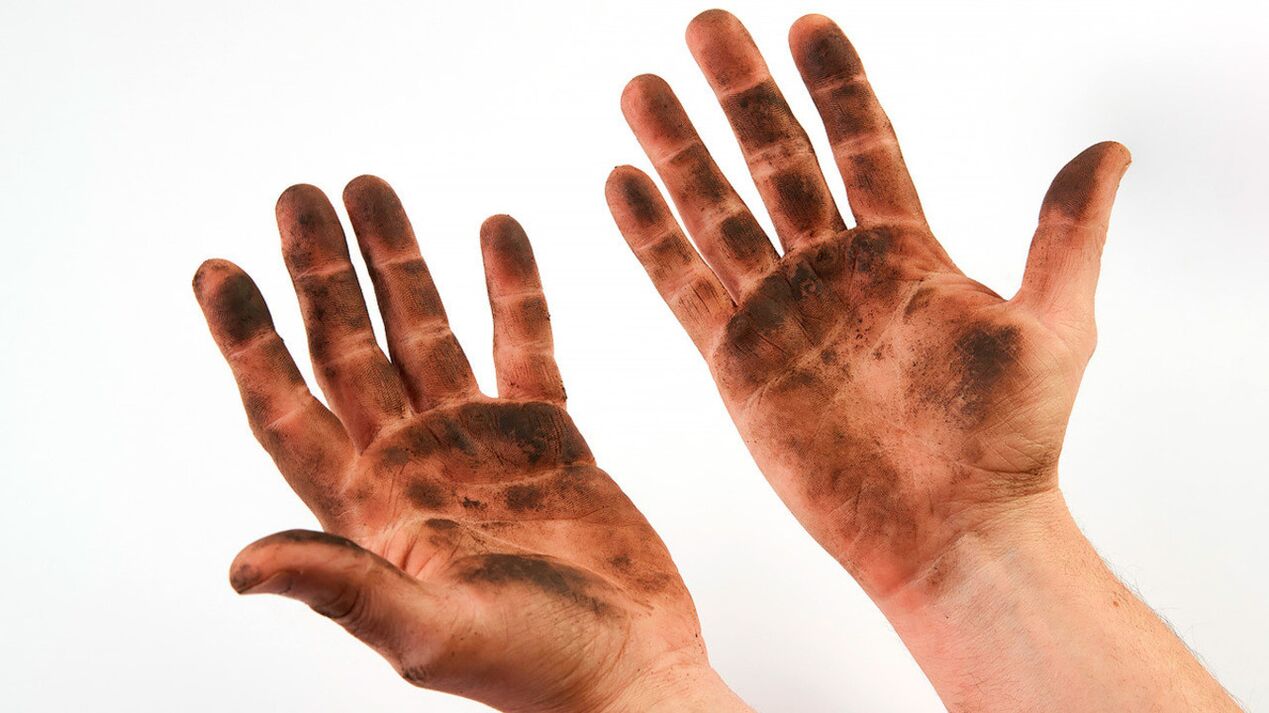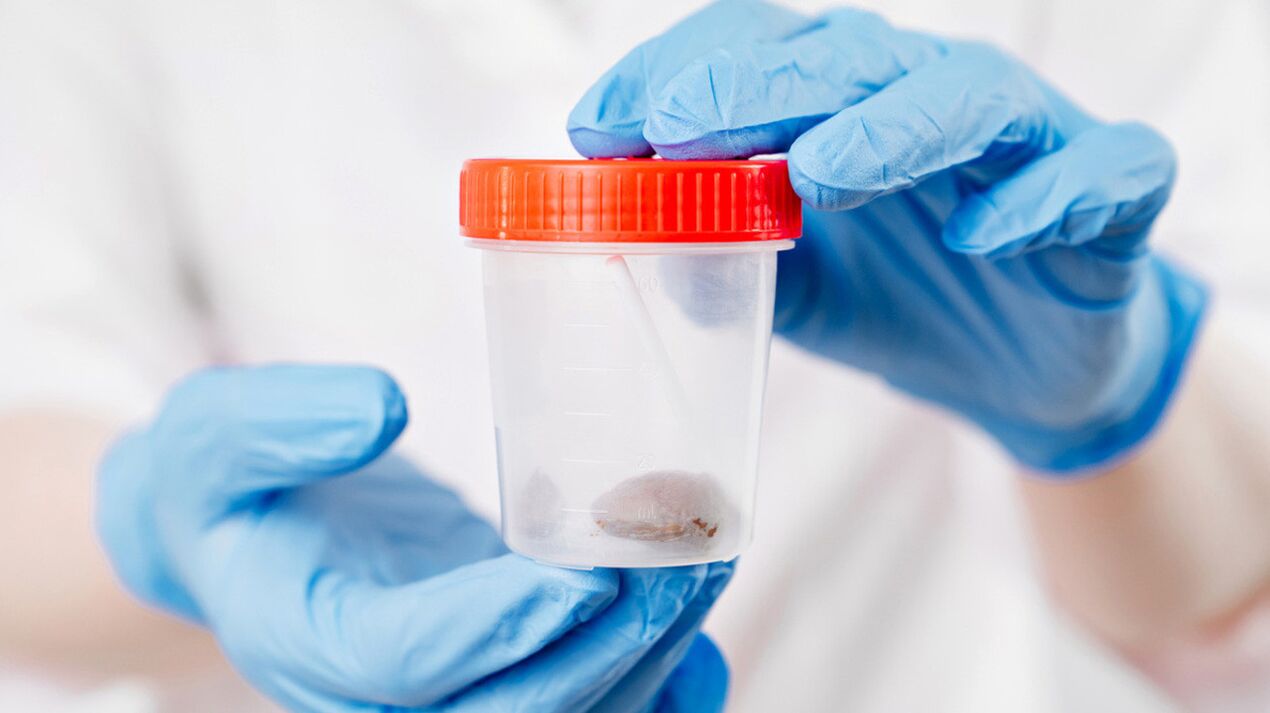%20in%20the%20hands%20of%20doctors.jpg)
Worms are parasitic worms that live in the human and animal bodies. They are difficult to detect because they disguise themselves like many other diseases and conditions. Symptoms of a helminthic attack range from mild malaise to fainting with severe intoxication. We will tell you where you can be infected with worms and how to get rid of them.
What's that
Worms are considered to be the most common parasites in humans. Today science knows about 300 worm diseases. The most common are intestinal worm diseases - enterobiasis and ascariasis, which affect more than 2 billion people.
The size of the worms that live in the body varies from a few millimeters to a few meters. For example, the length of the cream worm that causes enterobiasis does not exceed 1 cm. Some tapeworms (e. g. , broad tapeworms) reach 12-15 meters.
Causes of helminthiasis
Helminthiasis is a disease in which infection with worms occurs. Worms enter the human body and remain there. These parasites live not only in the intestines, but also in other organs and tissues.
According to the World Health Organization, one in four people on Earth is infected with worms. At the same time, WHO experts state that the actual number of people infected is at least 50%. This is especially relevant for countries with low hygiene cultures (these are some of the countries in Africa and Southeast Asia). In other countries, more than 1. 5 million cases of helminth infections are recorded each year. A large number of them are children.
How can you be infected with worms?
There are 4 ways of infection:
- Through the ground. Such a disease is called geohelminthiasis. Unwashed fruit can store tens of thousands of parasites. Therefore, it is very important to wash vegetables, fruits and hands thoroughly before eating. Walking pets are another source of soil parasites.
- After contact with an infected person. Parasitic worms are very productive. In just one day, female cream worms can lay up to 5, 000 eggs in the human body. Eggs and adults can be passed on to others through bedding and other household items. After that, it is enough for those infected not to wash their hands, and the worms will penetrate inside.
- While eating contaminated food. Such a helminthic disease is called biohelminthiasis. You can catch parasites with inadequate heat treatment of meat, poultry or fish.
- Through insect bites. This type of delivery is rare. As a rule, very small parasites can be spread through insect bites.
Consider risk factors that increase the likelihood of infection with worms in adults and children:
- Ignore hygiene rules - if you don’t wash your hands after walking, using the toilet, or before eating.
- The habit of biting nails - there is a lot of dirt underneath with microbes and parasites. This also includes the habit of inserting pens, pencils and other objects into your mouth.
- Poor pet care, especially for those who are out.
- Eat unwashed vegetables and fruits.
- Using water from the source in question.
- Poor dwelling cleaning.
- Desire for pet food that has not undergone a proper cooking process.
Who is at risk

No one is immune from worm infections. Enough to give flexibility in terms of hygiene, and parasitic larvae can "break through" into the body. The following categories of people are particularly susceptible to helminthiasis:
- Little children. Often, helminthic invasion is observed in children. This is due to the fact that the child ignores the rules of hygiene. Small children put things in their mouths, and on the streets they often dig mud. In groups, children tend to contact each other more closely than adults, which also increases the likelihood of infection.
- Families with pets. The eggs and larvae of the parasite, which enter from the driveway into the dwelling with pets, can be found everywhere. Often, owners of dogs, cats and other animals are unaware of the problem and find out about the presence of worms when contacting a veterinarian for other reasons.
- Foodies. Lovers of exotic dishes such as sushi, raw meat or fish are also at risk.
- Travelers. This is especially true for people who go to countries with low levels of hygiene.
- Summer residents, agricultural workers. People who work in vegetable gardens, orchards or just live in the countryside.
- People who find raw fish or meat in their work. For example, the seller or the cook - while processing, cutting and preparing food.
Myth 1: there are no parasites on marine fish.
Many people mistakenly believe that worms are only found in river fish, and they are not in the sea because of salt water. Indeed, many marine fish are exposed to parasites that are not harmful to humans. In this case, raw river fish are more dangerous than raw sea fish. But this does not mean that sea fish is completely safe: it is always recommended to process any fish - fry it, boil it or freeze it for 3 days.
Classification of helminthiasis
There are several classifications of parasitic worms. With localization, the worms are:
- Intestine - lives in the small or large intestine. These include ascaris, eels, whip worms, cow tapeworms and others.
- Pulmonary - living in the tissues of the bronchopulmonary system. Often it is a coincidence of the lungs.
- Tissues - parasites on various tissues of the body. Tissue worms include schistosomes, trichinella and toxocar.
- Liver and gallbladder parasites. They are hepatic fluke, hepatic giant flux, and clonorch (Chinese coincidence).
There are 4 classes of helminthic diseases, depending on the pathogen:
- Nematodes - caused by ringworms. These are ascariasis, enterobiasis, trichinosis, trichocephalosis, toxocariasis, ankylostomiasis and others.
- Cestodoses - the causative agent is a tapeworm. Such pathologies include hymenolepiasis, teniasis, teniarinchiasis, diphyllobothriasis and cystcerciasis.
- Dystomyases are diseases caused by flatworms. These are fascioliasis, opisthorchiasis, dicroceliosis.
- Protozoses - the causative agent is protozoa, such as lamblia, toxoplasma or amoeba.
More than 70 species of parasitic worms are distributed. The most common are the following helminthic diseases (see table).
| Disease | The causative agent and its characteristics | Method of transfer |
|---|---|---|
| Ascariasis | Called ascaris. These are ringworms that live in the gut. They can grow up to 30-40 cm. Roundworms consume almost all nutrients from food. In the process of vital activity, the worms injure the intestinal wall to the point of perforation | Often, ascaris eggs are delivered via the fecal-oral route. They last a long time in the soil and on the surface of vegetables, fruits, herbs and berries |
| Enterobiasis | It develops when cream worms enter the body. This is a small round worm, the size of 0, 5-1 cm. The main danger of enterobiasis is the toxic waste products of worms | Contact with infected people. Pinworm eggs remain on various surfaces for some time. |
| Giardiasis | Caused by a microscopic parasite - lamblia. Pathogens produce toxic substances and injure tissues | Giardia is spread through the faecal-oral route, also through contaminated food and water |
| Opisthorchiasis | The causative agent is a small worm up to 2 cm in size. Often they carry parasites in the liver and bile ducts. With opisthorchiasis, poisoning with toxic substances and mechanical damage to tissues occur | The pathogen opisthorchiasis is spread by raw fish |
| Echinococcosis | It is caused by echinococci tapeworms, the size of which does not exceed 5 cm. Echinococci are parasitic on a variety of tissues, including the heart and brain. Pathogens cause severe disturbances in the function of organs and systems of the body. In some cases, they can provoke the process of malignant tumors. | They are spread through dirty hands and contaminated food. Echinococcus carriers can also be dogs and mice. |
| Diphyllobothriasis | The causative agent - a large tapeworm, reaching 10-15 meters. Tapeworms live in the small intestine and cause serious damage to the host’s body. Worms produce toxic substances and significantly interfere with the function of the digestive tract | Delivered by eating raw fish |
| Trichocephalosis | Called by a whip, a round worm that looks like hair. Vlasoglava can reach 5-6 meters. The worms live in the intestine, penetrating the submucosal layer. Causes poisoning, inflammation and acute anemia | Invasion is done by swallowing parasite eggs |
Worms are also classified according to rank:
- Acute helminthiases - appear 2-4 weeks after infection. In this case, the symptoms of worms are observed from 1 week to several months. If you do not carry out therapy, the disease becomes chronic.
- Chronic helminthiasis - manifestations depend on the type of parasite. For example, if this is a parasite with larval reproduction, a prolonged allergic reaction will occur. Other chronic worm diseases may be asymptomatic or accompanied by pain, malaise, fatigue, and other symptoms.
Complications of helminthiasis
If helminthiasis is not treated, then this leads to serious, sometimes life-threatening complications:
- Anemia - anemia, insufficient amount of red blood cells and hemoglobin in the blood. This condition is due to the fact that the worms consume some of the nutrients needed for normal hematopoietic function.
- Destruction of tissues and organs. Worms live not only in the lumen of the gastrointestinal tract, but also in the thickness of tissues, for example, liver, lungs, muscles. Most importantly, tissues are affected during worm migration, as they move from one department (or organ) to another - boils and persistent inflammatory foci form. Against this background, the risk of developing infections and malignant tumors increases.
- Diseases of the nervous system. This is due to the toxic waste products of worms that poison the body. Nerve tissue is most sensitive to toxins. This can cause irritation, headaches, insomnia, and other signs of nervous system damage.
- Allergic reactions. Toxic substances released by worms can also act as allergens. The human immune system may react improperly to these substances. This leads to the appearance of special allergic symptoms-rash, redness of the skin, itching, and sometimes nausea and vomiting.

The presence of worms in the body also causes a deficiency of the following minerals:
- Zinc. With zinc deficiency, immunity decreases, a person often has a fever and suffers from other infectious diseases. The likelihood of developing prostatitis and infertility increases, because this trace element is very important for the health of the reproductive system.
- Selenium. Decreases immunity, and also increases the risk of malignant tumors.
- Iodine. Iodine deficiency in children causes stunted growth and development (physical and mental). In adults, the work of the thyroid gland worsens, metabolic processes slow down.
- Mangan. With a lack of manganese, bones become brittle. A person quickly loses weight, he is often bothered by cramps and dermatitis.
- Chromium. Deficiency of this element causes developmental delays and disorders of carbohydrate metabolism.
Worms and immunity
Often, worms are accompanied by other parasites - toxoplasma and chlamydia. This is due to the suppression of immunity. A healthy body is able to fight off invaders, but with helminthiasis, protection is weakened. Toxoplasmosis is very dangerous during pregnancy, as it can cause fetal death.
Symptoms of helminthiasis
The symptoms of worms are different in adults and children. The most common symptoms are:
- itching in the anus is the most common symptom of intestinal worms;
- teeth grind in dreams - occurs due to toxins released by worms;
- sunbathing in bed and in the morning;
- nausea while brushing teeth in the morning;
- peeling the skin of the hands and feet;
- allergic skin rash;
- strong hunger, to the point of fainting;
- swelling (often allergic);
- itchy skin;
- chronic fatigue;
- headache and dizziness;
- mental disorders for no known cause (stress, neurosis, depression);
- bloating;
- symptoms of intestinal disorders;
- weight changes (overweight and thin);
- the simultaneous course of several diseases (or the substitution of one disease for another);
- cramps or pain in the abdomen;
- anemia;
- delayed physical and mental development in children;
- childhood hyperactivity or lethargy;
- enlarged lymph nodes (often in the acute stage of helminthiasis).
When to see a doctor
Therapists or infectious disease specialists deal with the treatment of parasitic diseases. A doctor should be consulted if there are one or more of the above symptoms. Due to the relatively sophisticated protective worm system, you should describe symptoms as accurately as possible to the doctor, as well as discuss your lifestyle: what foods you like, whether you’ve recently gone and where, have pets, etc.
Diagnosis of the disease

If the doctor suspects helminthic invasion, then it is not difficult to identify. For this, the following diagnostic procedures are used:
- Stool examination. Stool samples are submitted to the laboratory. They may contain eggs or larvae of parasites that live in the intestines.
- Scraping for enterobiasis. The broom is taken from the anus with a cotton swab. With this analysis, pinworms can be identified. Scraping should be done early in the morning, before going to the toilet.
- Blood tests for antibodies. This is a fairly informative test with which you can identify many parasites. However, even with a positive result, there is no 100% guarantee that the parasite is still present in the patient’s body, as the antibodies remain present even after removal.
- Instrumental diagnostics. The use of radiography, MRI and CT with the use of contrast agents. This diagnostic method makes it possible to identify both large worms and some pathological changes in the tissues caused by helminthic invasion.
As a rule, doctors prescribe different studies to improve the reliability of the data obtained. Sometimes patients have to be tested several times to make an accurate diagnosis.
Important!When confirming helminthiasis, it is necessary to inform other immediate family members about this. Examination is also recommended for them. If the test is positive, it is important that all infected family members get treatment. Otherwise, the parasite eggs will once again enter the body of the recovered person, and everything must be repeated from the beginning.
Treatment of worms in children and adults
Although there are many antiparasitic drugs in pharmacies, you cannot take them on your own. Prescribing a comprehensive treatment, doctors strive not only to get rid of parasites, but also to eliminate the consequences of their vital activities.
As a rule, in addition to anthelmintic drugs, patients are also prescribed vitamins and other drugs that relieve the symptoms of the disease. Doctors choose medications separately for each patient, as the symptoms are different for each person.
Medications for the treatment of helminthiasis
With helminthic invasion, patients are given the following drug complex:
- Anthelmintic drugs. This is an anthelmintic drug that eliminates or kills worms. This goal is achieved by interfering with the parasite’s metabolism or paralyzing its muscles. In the latter case, they lose the ability to stay in the intestine and are excreted.
- Antihistamines. If the patient is allergic to parasites, then at the time of treatment, the doctor prescribes anti -allergic drugs. This is very important, because with the massive death of worms, a large number of allergens are released, which can provoke a strong allergic reaction. Antihistamines block the production of histamine, a major mediator of allergic reactions.
- Enterosorben. These are drugs that are able to bind substances in the gastrointestinal tract. During worm treatment, enterosorbents are used to bind and remove toxic substances released by the worms.
- Vitamins and minerals. Often, B vitamins (folic acid and B12) and iron preparations are prescribed. This is needed to treat anemia.
- Hepatoprotectors. These are drugs that protect the liver from toxic substances. These include preparations based on essential phospholipids or plant materials (milk thistle, artichoke, licorice, St. John's wort, and other plants).
- Probiotics and prebiotics. Prescribed to restore the intestinal microflora. Probiotics are a living culture of beneficial bacteria. Prebiotics are components of undigested food (such as fiber) that are only fermented by the intestinal flora.
Surgery
In most cases, it is enough to drink a drug complex. However, sometimes doctors still have to undergo surgery. For example, a large accumulation of ringworms can cause intestinal obstruction. This is an urgent condition that requires surgery.
Worms can accumulate in the bile ducts, with a background of obstructive jaundice and even liver abscesses. The same condition can occur in the pancreas, which causes acute pancreatitis. If the worm enters the appendix, appendicitis develops. All of these conditions require immediate surgery.
Often, surgery is performed when organs are damaged by echinococcus. These parasites accumulate, forming echinococcal plugs in the liver, lungs, bones, kidneys, and even the brain. The danger of such a plug can explode and break.
Folk remedies for worms
Folk remedies for worms are not as effective as anthelmintics. This is just an additional method - the main treatment is prescribed by a doctor.
Folk remedies include pumpkin seeds, which contain cucurbitin, a substance that has antihelminthic effect.
Myth 2: Garlic enema gets rid of worms
Worms actually do not like garlic, because it contains phytonutides - antibacterial and antiparasitic substances. However, there is no need to do a garlic enema for helminthiasis. In the large intestine, where the contents of the enema are injected, there are few worms. A large number of parasites live in the small intestine, so this procedure is useless. Also, from such an enema, you can experience serious irritation of the mucous membranes.
Prevention and prevention

In most cases, the prognosis for the treatment of helminthiasis is good. A timely visit to the doctor will avoid some of the complications that worms cause.
Worm prevention is reduced to adhere to the following recommendations:
- Wash your hands with soap and water before eating, after returning from the street, using the toilet, or after contact with animals.
- Wash vegetables, fruits and herbs until clean. It is better to pour boiling water over them.
- Do not use other people's hygiene items and other people's dishes.
- Give up bad habits (smoking, alcohol).
- Avoid stress, it will have a good effect on immunity.
- Show your pet regularly to the vet, timely vaccines.
- Each year, undergo a thorough preventive inspection, including testing for worm eggs.
- Cook meat, chicken, fish and eggs properly.
Myth 3: parasites die in frozen meat.
This only applies to a number of worms. For example, beef tapeworms actually die when the meat is frozen in the cold (minus 12 and below). For example, Trichinella larvae can be eliminated only after 2-3 hours of cooking.
In conclusion
The main cause of helminthic invasion is inadequate hygiene. Improving sanitation and cooking pet food properly reduces the chances of helminthiasis. In most cases, worms do not endanger human health if detected in a timely manner. But lack of treatment leads to serious consequences - anemia, damage to the nervous system and other infections.






































